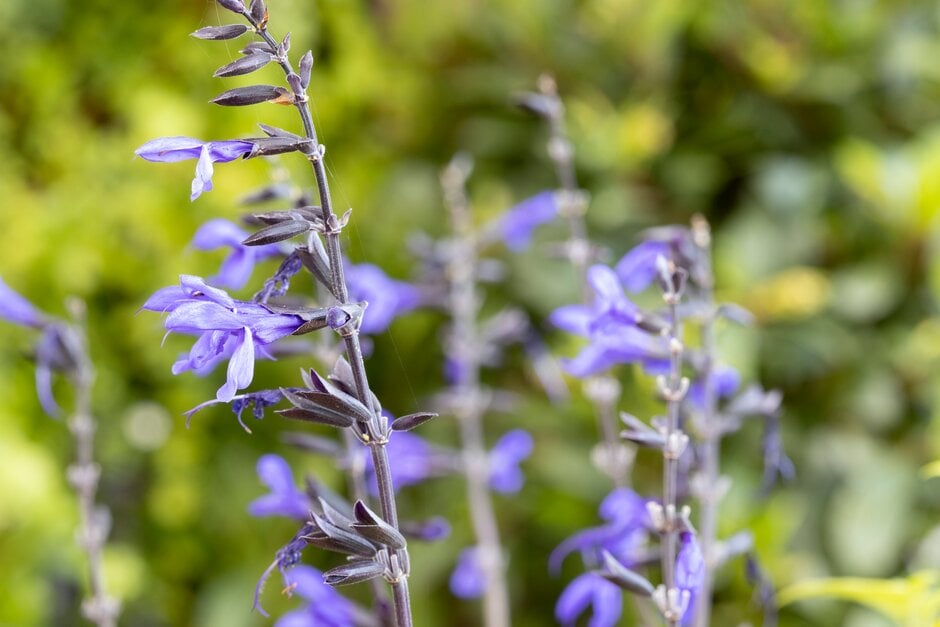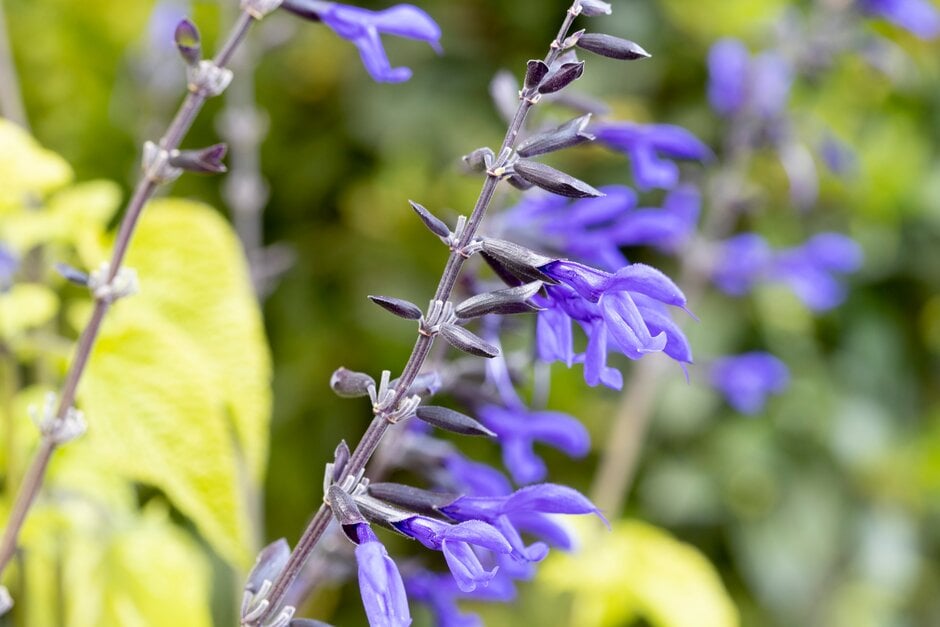Salvia guaranitica 'Black and Bloom'
anise-scented sage [Black and Bloom]
A tall perennial to 120cm tall, forming a wide clump of stems bearing dark green ovate leaves and loose spikes of vivid cobalt blue flowers, contrasting with black calyx, and opening in mid-summer and autumn
Size
Ultimate height
1–1.5 metresTime to ultimate height
1–2 yearsUltimate spread
1–1.5 metresGrowing conditions
Moisture
Well–drainedpH
Acid, Alkaline, NeutralColour & scent
| Stem | Flower | Foliage | Fruit | |
| Spring | Green | |||
|---|---|---|---|---|
| Summer | Black | Green | ||
| Autumn | Blue Black | Green | ||
| Winter |
Position
- Full sun
Aspect
South–facing or West–facing
Exposure
Sheltered Hardiness
H3Botanical details
- Family
- Lamiaceae
- Native to GB / Ireland
- No
- Foliage
- Deciduous
- Habit
- Bushy
- Genus
Salvia can be annuals, biennials, herbaceous or evergreen perennials, or shrubs. They have paired, simple or pinnately lobed, often aromatic leaves and 2-lipped flowers in whorls, forming simple or branched spikes or racemes
- Name status
Accepted
How to grow
Cultivation
Best grown in full sun, in well-drained soil with shelter from cold winds. Maintain low humidity for plants overwintered indoors in a greenhouse. Under glass grow in well-drained , peat-free potting compost in full light with shade from hot sun
Propagation
Propagate by division of established clumps. Take softwood and semi-ripe stem-tip cuttings from new non-flowering growth. Take basal stem cuttings from new shoots that are about 8cm (3in) tall
Suggested planting locations and garden types
- City and courtyard gardens
- Cottage and informal garden
- Coastal
- Mediterranean climate plants
- Patio and container plants
- Wildlife gardens
- Flower borders and beds
- Bedding
- Conservatory and greenhouse
Pruning
Cut back spent flower spikes to prolong flowering
Pests
May be susceptible to slugs and snails, capsid bug, leafhoppers, aphids, glasshouse red spider mite and glasshouse whitefly
Diseases
May be susceptible to honey fungus (rarely), powdery mildews, verticillium wilt and foot and root rots
Get involved
The Royal Horticultural Society is the UK’s leading gardening charity. We aim to enrich everyone’s life through plants, and make the UK a greener and more beautiful place.

